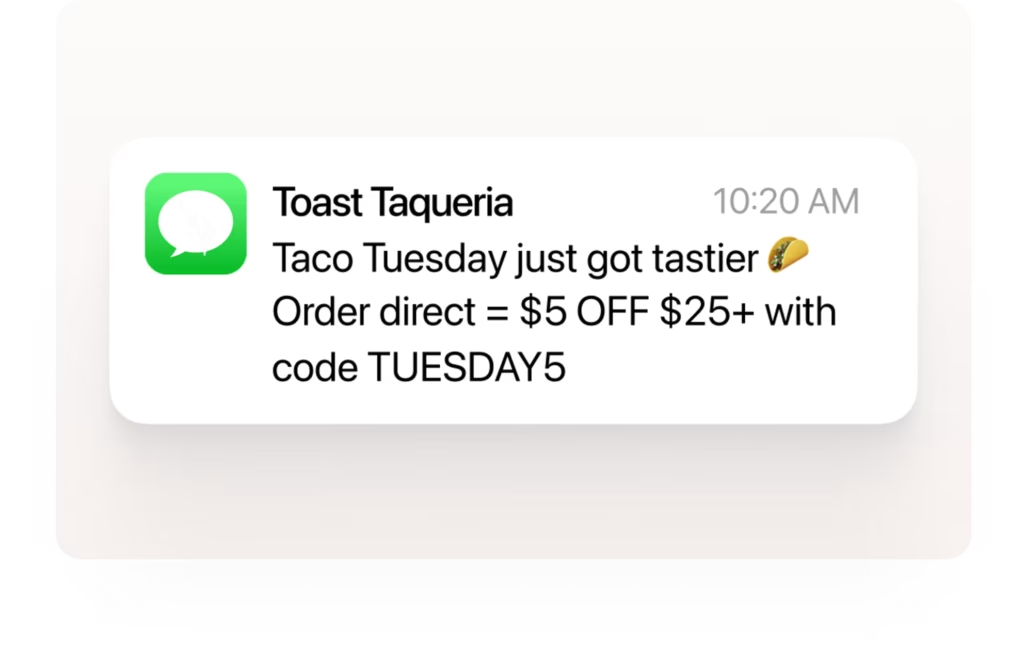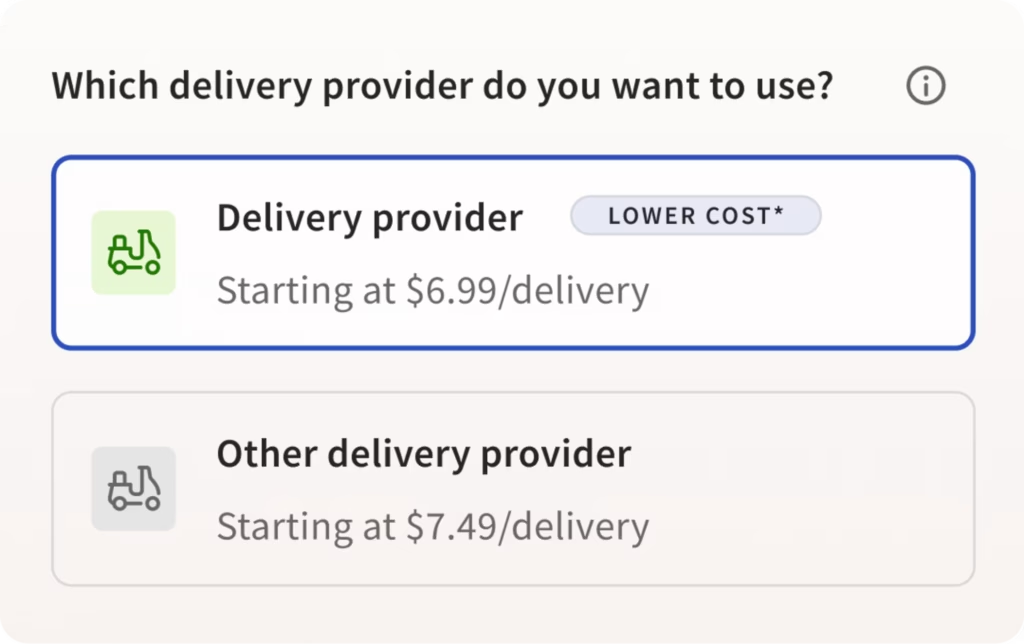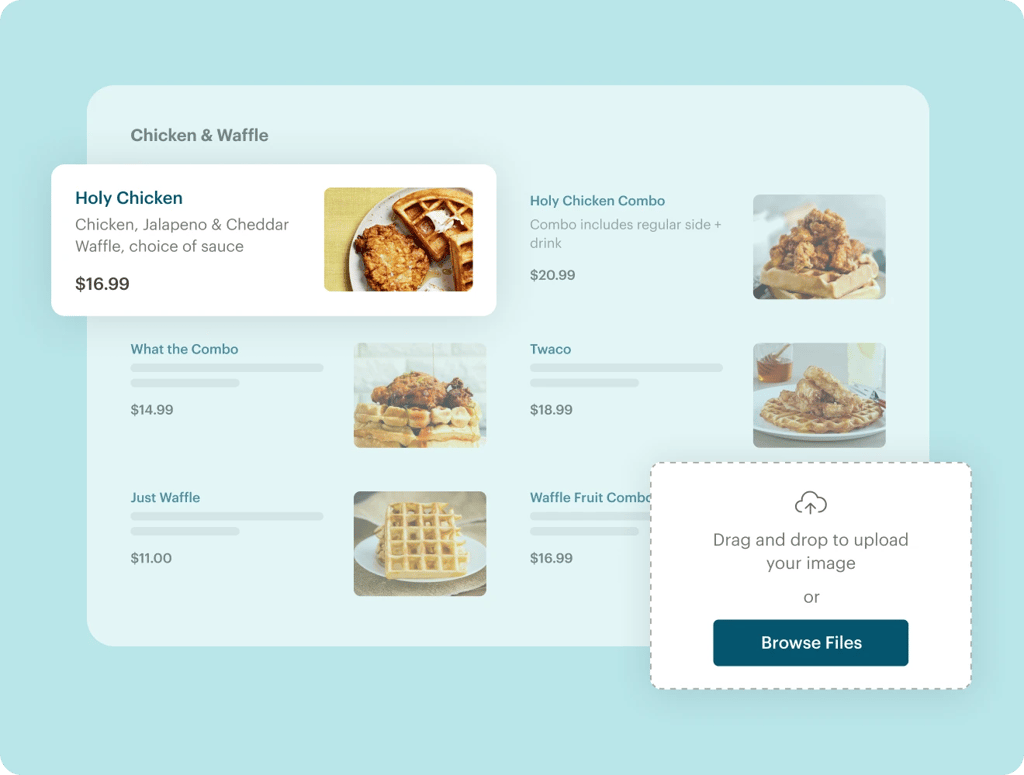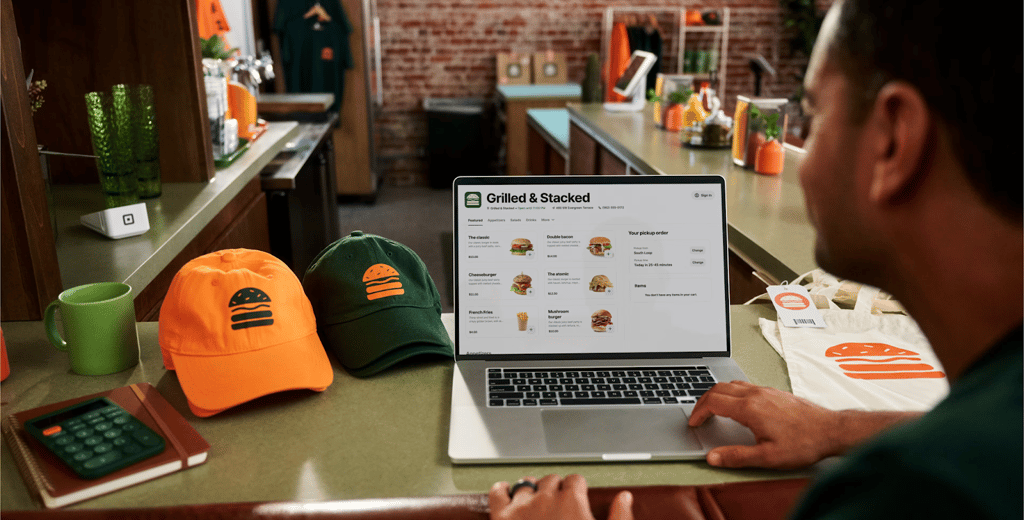Toast is the best overall delivery POS system for restaurants. See more of our expert rankings based on pricing, features, and ease of use.
A delivery point-of-sale (POS) system allows you to manage food delivery functions with ease and efficiency. This tool also helps you manage your staff, inventory, and the marketability of the food and drink items you are selling to customers.
The best delivery point-of-sale systems combine both driver and delivery management, and provide an intuitive way to easily manage this workload during busy service hours.
While there are many different options available in the food delivery space, five stand out as the best options for restaurants. The best food delivery POS systems in 2025 are:

Toast is one of The Restaurant HQ’s most recommended POS systems. I gave it a near-perfect score overall for its low-cost Starter Kit — with POS hardware — and its run of must-have delivery features. Customers can set up delivery zones, aggregate orders across channels, dispatch drivers, manage schedules and menus across locations and channels, and more.
| My score | Starting monthly price | Contract length | Driver management features | |
 Toast Toast | 4.48/5 | $69/month | 2 years | Great |
 Lavu Lavu | 4.11/5 | $9.99/month | Month-to-month | Good |
 Lightspeed Lightspeed | 4.02/5 | $189/month | 1 year | Good |
 TouchBistro TouchBistro | 3.81/5 | $69/month | Month-to-month | Great (For small locations) |
 Square for Restaurants Square for Restaurants | 3.81/5 | $69/month | Month-to-month | Good |
I was the manager of a restaurant that took a lot of takeout and delivery orders, and I have worked in fast-casual and fine-dining settings with delivery capacities. I also rigorously review POS systems, searching for new features and offerings of over a dozen systems. My real-world experience, combined with my regular analyses of restaurant software, guided my evaluation of this list of delivery POS systems.
Ray Delucci

Pricing: 4.31/5
General Features: 4.38/5
Advanced Features: 4.63/5
Support: 4.81/5
Expert Score: 4.35/5
Toast is a leader not only in delivery POS systems, but in POS systems entirely. Always present in our best restaurant POS system guide, Toast has everything you need to manage your delivery effectively, and it comes with a lot of customizable controls. It also syncs and works with industry-leading apps such as Uber and DoorDash, helping you ensure delivery is as hassle-free as possible. Its focus on customer engagement, marketing, and analytic reporting on your delivery orders is another one of its many highlights.
There are not many in Toast, but the 2-year contract is often a point of contention for some operators. Also, you are locked into Toast Payments when using Toast, which can limit your flexibility if you prefer a different payment processor. Overall, Toast offers the most robust and comprehensive food delivery tools in 2025 for any restaurant type.
What actual users say*
Toast users across Capterra and G2 highlight the delivery functionality as a key driver of their success. Many also note how easy the setup process is, and praise Toast’s excellent customer support and wealth of online resources. On the other hand, some of Toast’s more robust tools can be a bit confusing to use, which may slow down adoption initially.
*Some quotes have been edited for clarity.



Pricing: 4.06/5
General Features: 4.06/5
Advanced Features: 4.13/5
Support: 4.75/5
Expert Score: 3.43/5
Lavu is a great POS system that focuses on getting you the tools you need in a minimal yet efficient interface. Its cheap monthly option, multi-channel sales approach, and customizable tools for online ordering make it great for restaurants that want their brand to stand out in food delivery. These and its robust customer service make Lavu a good fit for online restaurants that want to offer food delivery to their customers.
The biggest drawback for Lavu stems from the lack of depth in some of its features. For example, its marketing and loyalty tools are not as robust as those of other providers in this guide, and its in-house driver management tools can be limited. While they offer multiple sales channels, the analytics from these channels are very basic. That being said, if you truly want customers to experience your restaurant’s brand through delivery, then Lavu is a strong contender.
What actual users say
A common favorite among Lavu users is the platform’s flexibility in customization. Customers also praise the robust customer service, viewing it as a major value-add to their operations. While some users desire more advanced analytics, the overall experience with Lavu as a POS delivery solution is largely positive.
“I like that Lavu allows many different options that personalize settings to fit our business needs. Also, the online customer service chat is highly responsive!” — Verified user in Restaurants, G2 review



Pricing: 3.31/5
General Features: 4.06/5
Advanced Features: 4.33/5
Support: 4.56/5
Expert Score: 4.1/5
Lightspeed is a powerful POS system, although it comes at a higher price point. That said, the range of tools it offers is extensive, and its focus on helping restaurant operators manage multi-unit locations extends into its delivery POS system. Lightspeed also stands out for its strong kitchen integrations and robust multi-channel menu management tools, making it ideal for diversified restaurants.
The service stumbles in a couple of key areas, mainly the price and the lack of month-to-month pricing. I also personally believe their driver management tools could be more robust and should offer more managerial control of in-house fleets. Despite these, it is hard to find a better delivery POS system, especially if you have many units to manage.
What actual users say
One thing that really gave me confidence in Lightspeed’s ability to handle multi-location delivery is how often reviews mention that staff found the system easy to learn. Its data and analytical reporting are also standout strengths for many users. That said, some updates can be slow to roll out, and the lack of remote access can be a drawback for certain operators.



Pricing: 3.38/5
General Features: 3.75/5
Advanced Features: 4.13/5
Support: 4.25/5
Expert Score: 3.74
TouchBistro allows smaller operations to offer delivery and manage their driver fleet in effective — though somewhat limited — ways. It’s designed with small restaurants in mind, so it’s not ideal for managing a large fleet on your own. While many restaurants now rely on third-party apps for delivery, TouchBistro fills the gap for independent restaurants and cafés that want to offer delivery without paying steep third-party fees.
That said, TouchBistro has some drawbacks. It lacks true tip management, which can be a deal-breaker for some operators. Virtual brand management isn’t supported either (though that may matter less for smaller restaurants), and its inventory tools can lag, which is not great for operators who want quick, in-the-moment details.
What actual users say
Users seem impressed with how easy TouchBistro is to use and how intuitive it can be for general training purposes. However, many reviews note that customer service can be better, with some expressing significant frustration over support quality. I would say overall, the system performs well, but you shouldn’t count on customer service to be a strong point.



Pricing: 4.31/5
General Features: 3.75/5
Advanced Features: 3.83/5
Support: 3.75/5
Expert Score: 3.08/5
Square for Restaurants is one of the most popular and user-friendly POS software on the market. With excellent POS functionality in a variety of restaurant types, it’s reliable and often the most cost-friendly for operators.
It has a base $1.50 delivery rate for third-party, on-demand deliveries and charges 50 cents for in-house deliveries. These rates are extremely competitive and easy for restaurants to build into their costs.
Square has required its delivery tools to be in the $69/month plan, but this doesn’t mean value is lost. Square offers a ton of customization to your online delivery platform, focusing on customer loyalty perks to keep your customers ordering. This loyalty focus makes Square a smart choice for restaurants looking to build and retain a base of repeat delivery customers.
What actual users say
Square for Restaurants is one of the most popular restaurant POS systems on the market. Customers love how easy it is to use and appreciate the wide range of customization features it offers. Tasks like setting up an online menu are simple, and customer support is consistently responsive. Combined with its many niche features, these strengths leave most users highly satisfied with the software.


When you’re looking for a delivery POS system, it’s crucial to understand the difference between one that offers driver management and one that allows for third-party integration.
For example, my top pick in this guide, Toast, is a great tool that exclusively uses third-party delivery platforms such as Uber Eats and DoorDash to fill orders. On the opposite end is TouchBistro, which was designed to manage in-house driver fleets with Uber-like precision.
Which strategy is best for your restaurant? It depends on your budget, available staff, and customer demand. If you have the proper licensing and insurance and are already staffed with drivers, then using a system for in-house driver management becomes much easier.
If you are new to offering delivery and want to get started quickly, using a third-party integration is your best bet. Either option can be successful, so it’s up to you and your business’s constraints to decide.
There are key features you will need to ensure any system you choose for your food delivery program is successful. Consider the features and considerations below to find the best delivery POS system for your business.
One key factor to consider in a delivery-focused POS system is whether delivery tools are included in the base plan or come at an extra cost. If you’re working within a set budget for monthly POS fees, knowing this upfront can shape your options and guide your decision. Doing your due diligence on what’s included in each subscription plan is essential.
One of the biggest factors in food delivery having reliable access to drivers who can get your food to customers. If you do not have an in-house fleet, then connecting to third-party drivers is a must-have. Even the most advanced POS features won’t matter if you don’t have the labor in place to actually deliver the food.
Delivering food can be tricky, as they need to be consumed as close to the time it was prepared as possible.The same goes for ordering: for many guests, your website or app is their only touchpoint with your restaurant.
That’s why having a smooth, user-friendly ordering interface is essential to keep customers from getting frustrated and abandoning their orders. You also want your ordering site to reflect your brand, so understanding how a POS represents your business is important.
Understanding your sales data helps you react to business changes and move in ways that better serve you and your customers. Clear data and timely reporting are integral features for any POS system you choose for online delivery. This will help you understand customer behavior, the success of your delivery program, and the overall health of your business.
At this stage, it’s about understanding how and at what rates your payment processor charges. You need to know whether you can shop around for better rates, or if you’re locked into the standard rate offered by your POS provider.
The last major feature to evaluate is how orders flow into your kitchen and KDS screens. Confusing software can lead to mistakes in preparation, which can frustrate customers and discourage repeat orders. Make sure you understand how orders are received, and check user reviews about the POS experience during service before committing to a provider.
Picking a delivery POS system for your restaurant is very important, as delivery acts as a crucial arm for your business. Below are the mistakes to avoid during this process.
One of the biggest mistakes I see from operators is overlooking the cost of a POS system, including associated fees. While a system’s marketing may sound great on paper, understanding the cost of using it and any additional fees for crucial features is vital to being profitable in managing the delivery arm of your restaurant.
I would argue that analytics is more important in delivery than in-house dining in tracking your restaurant’s performance. In-house diners leave real-time feedback, but analytics tells you about the effectiveness of a delivery program. Missing key information can hinder your ability to optimize your menu or refine your process, so overlooking this valuable data is crucial.
When restaurants offer delivery, they typically do so to increase revenue and expand their customer base. Done right, this profitability and extra revenue may lead to business expansion. However, picking a POS system that works for one location but cannot scale with your success is a mistake. Having a POS system that grows with delivery is crucial if you plan to expand the footprint of your restaurant group.
Real-world user reviews tell the story of how a software performs in action. By not heeding the advice or reviews of your peers, you risk falling into common pitfalls. Read about how others find success in delivery through their POS system to have an informed approach to picking your software.
Choosing the best delivery POS system for your restaurant helps your profitabibility and delivery program. If the system you choose does not meet your needs, you risk wasting money, alienating customers, and hurting your business reputation. Below are the steps you should take when choosing the best delivery POS system for your restaurant.
As discussed earlier, there are both pros and cons to owning your own delivery. Staffing drivers, having the proper insurance, and having a proper way to receive and route delivery orders are a large undertaking.
Alternatively, third-party delivery apps take away this work but come at a premium price that becomes a cost on each order you deliver. Determining whether you want to own or outsource your delivery process is crucial to your search approach.
The next step is determining the unique business needs your restaurant may require. Projecting the anticipated volume of deliveries you may encounter and the complexity of each order will help determine the best system for your restaurant.
Furthermore, picking a system that’s easy for your staff to use and execute online orders through is essential when determining the best one for your particular restaurant.
Choosing a POS should be an exciting process, so let companies sell you on their products. Don’t lock yourself into just one option too soon. Instead, take demos, explore how different systems work, compare pricing, look for deals, and embrace the research process.
Taking the time to familiarize yourself with a POS before committing is highly important, eespecially if you’re looking at a long-term contract like Revel’s three-year plan. Take your time and find the system truly made for you.
Understanding your must-haves in a POS delivery system is essential to finding the right fit. For example, if highly detailed delivery mapping is a priority, don’t waste time evaluating systems that don’t offer it. Be clear and confident about not only what you need, but also what features will help you excel in your delivery process. That will help you find the best software.
Once you’ve done your due diligence, the final step is to commit to a POS and sign up. Then, take that commitment a step further and become the resident on-site expert in your POS so you can train your staff and create positive customer experiences. Leverage your POS to drive the growth and revenue you’re aiming for with food delivery.
Evaluating the delivery POS systems in this guide involved looking at the individual features of each software. Below are the different criteria I used to rank the software and their weights on the final score:
Pricing: 25%
One of the first and most integral aspects of a delivery POS system is the monthly cost. I looked at the overall price of the system and whether a free plan was offered. I also noted the payment processors available, the maximum number of users per system, and whether any volume processing discounts were available. Finally, I examined the hardware options available for each system.
I evaluated the general features of each system across subcategories. Delivery aggregation and routing were top considerations, along with KDS integrations, inventory syncing, and both workforce and driver management. Finally, I also considered multichannel menu and payment management.
My evaluation also considered delivery management, virtual brand management, and native online ordering platforms. Marketing and loyalty tools, offline capabilities, and tip management were reviewed as well. Finally, advanced features like CRM profiles, third-party integrations, and multi-location management were recognized as valuable additions.
Customer service hours and live support chat were key factors in this section of the rubric. I also looked at onboarding and installation support as a plus for these software types. Additionally, I also factored the depth of each provider’s online knowledge base and the availability of training resources or webinars into the scoring.
The final expert score combines my professional analysis with real-world user feedback and the volume of reviews available for each platform. This approach allows me to provide unbiased insights while also factoring in the sentiment and experiences of actual restaurant operators.
Below are the most commonly asked questions about food delivery POS systems.
Toast and Square for Restaurants are among the cheapest POS systems. Both systems have pay-as-you-go pricing, with an additional per-transaction fee. This pricing model allows operators to use the system without any upfront cost and can be a great way for financially strapped businesses to grow without incurring a large initial investment.
A delivery POS is a point-of-sale system equipped with delivery management tools. These can include map-based driver dispatch, the ability to hail third-party drivers on demand, and tools to organize orders from multiple third-party delivery platforms.
Many delivery POS systems now offer all three. And because so many delivery orders originate online — either through your restaurant’s website or a third-party platform — most delivery POS solutions also come with built-in online ordering tools.
A POS helps with online ordering by providing a user-friendly interface for customers to place orders and a convenient way for you to accept digital payments. Most restaurant POS systems have online ordering built into the POS.
Some, such as Square for Restaurants, include free online ordering. Using the built-in online ordering tools sends online orders directly into your POS order stream. As such, you can save money by reducing the labor required to process phone orders.
Today, most restaurants use a POS system rather than a traditional cash register. POS platforms make it easy to process the card and digital payments customers prefer while providing detailed reports that help restaurants stay profitable.
With the rise of cloud-based POS systems, providers like Toast and Square even offer free baseline plans, making it possible for even the smallest restaurants to take advantage of POS technology.
DoorDash and other third-party delivery platforms don’t offer a full-spectrum POS. You’ll need an additional system if you require POS functions such as employee timekeeping, inventory tracking, and reporting.
If you rely on third-party platforms for online ordering and delivery, you’ll want a POS that integrates with your preferred platforms. DoorDash, for example, integrates with 15 popular restaurant POS systems, including Toast and Square for Restaurants.
When it comes to the best delivery POS for your restaurant in 2025, Toast is takes the top spot. Its comprehensive suite of delivery tools, combined with seamless integrations with third-party apps like Uber Eats and DoorDash, sets it apart. Paired with its robust, industry-leading POS features, Toast stands out as the best option for managing delivery orders in today’s restaurant landscape.
Ray Delucci is a graduate of The Culinary Institute of America with a Bachelor’s in Food Business Management. He has experience managing restaurants in New York City, Houston, and Chicago. He is also the host of the Line Cook Thoughts Podcast, where he interviews and shares the stories of foodservice workers. Ray currently works in food manufacturing and food product development.
Property of TechnologyAdvice. © 2025 TechnologyAdvice. All Rights Reserved
Advertiser Disclosure: Some of the products that appear on this site are from companies from which TechnologyAdvice receives compensation. This compensation may impact how and where products appear on this site including, for example, the order in which they appear. TechnologyAdvice does not include all companies or all types of products available in the marketplace.